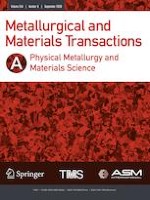02.07.2020
Effects of Titanium Addition on the Microstructural and Mechanical Property Evolution of FeCrB Alloys
Erschienen in: Metallurgical and Materials Transactions A | Ausgabe 9/2020
EinloggenAktivieren Sie unsere intelligente Suche, um passende Fachinhalte oder Patente zu finden.
Wählen Sie Textabschnitte aus um mit Künstlicher Intelligenz passenden Patente zu finden. powered by
Markieren Sie Textabschnitte, um KI-gestützt weitere passende Inhalte zu finden. powered by
